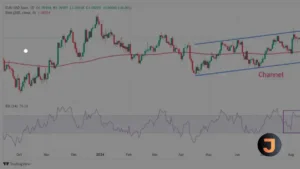Understanding the New Tax Landscape for Corporate Buybacks
In a move that has caught the attention of the financial world, the Internal Revenue Service (IRS) has been actively laying down the framework for the enforcement of a new excise tax on corporate stock repurchases. This tax, which is part of the broader effort to recalibrate the tax advantages of stock buybacks, was initially introduced under section 4501 and is set to reshape corporate financial strategies.
Corporate buybacks have long been a tool for companies to consolidate control, manage stock prices, and signal financial robustness. However, these repurchases have also been associated with tax benefits, as capital gains rates applied to these transactions are typically lower than ordinary income tax rates on dividends. The Joint Committee on Taxation estimates that the new excise tax will generate $74 billion over a decade, with projections soaring to $265 billion if the proposed increase from one to four percent takes effect.
As of December 31, 2022, public companies engaging in stock buybacks are subject to a 1% excise tax, with several key exceptions and rules in place. Notably, transactions under $1 million, contributions to employee plans, issues to the public or employees that reduce taxable amounts, and certain dealings by securities dealers are exempt. Additionally, REITs and RICs will not be affected by this tax.
The IRS has been proactive in providing guidance on this matter. After an initial notice on January 17, 2023, and subsequent transactional guidance in July, proposed regulations were released on April 9, 2024. These regulations clarify the application of the tax for both domestic and certain foreign corporations, introducing a statutory netting rule and a de minimis exception for repurchases not exceeding $1 million in fair market value.
For reporting purposes, affected corporations will utilize Form 720, attaching Form 7208 to detail the excise tax on repurchases. While a draft version of Form 7208 is already available, the final form is expected before the first reporting deadline.
With deadlines looming for taxpayers whose fiscal year ended after December 31, 2022, but before final regulations are published, the IRS has stipulated that any tax liability must be reported on Form 720 for the first full quarter following the release of final regulations. Payment deadlines will coincide with filing dates.
The IRS is currently inviting written comments on these proposed regulations, with deadlines set for May 13 and June 11, 2024. These comments will play a crucial role in refining the procedures and administration of the new excise tax as it moves from proposal to practice.






